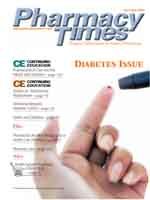Publication
Article
Pharmacy Times
Older Women Experience Poorer Urinary Function
Using data from the Health, Aging, and Body Composition Study, researchers were able to focus in on who has urinary incontinence and factors that put individuals at risk. The study, reported in Obstetrics & Gynecology (August 2004), referred to urinary incontinence as "common, costly, and chronic" in older women. Urinary incontinence accounts for a 3-fold increase in nursing home admissions, social isolation, and psychological stress, the researchers noted.
The study, which tracked many health issues among men and women in their 70s, zeroed in on data from 1588 Caucasian and African American women in Pittsburgh, Pa, and Memphis, Tenn. The results indicated that 21% reported having urinary incontinence at least weekly, with 10% having daily occurrences. Of the 21% of women reporting incontinence problems at least weekly, 40% had stress incontinence, 42% had urge incontinence, and 14% said that their urinary incontinence was not related to stress or urge. Urge incontinence occurs when nerve passages along the pathway from the bladder to the brain are damaged, causing a sudden bladder contraction that cannot be consciously inhibited.
The risk factors associated with both types of incontinence were race, oral estrogen use, and arthritis. Urge incontinence also was associated with insulin-treated diabetes, depression, and poor performance in balance and speed of walking. For stress incontinence, factors included chronic obstructive lung disease and being overweight.







